Asbestos popcorn ceilings, often referred to as textured ceilings, once a popular design choice, pose significant health risks due to the hazardous asbestos fibers they may contain.
Understanding what these ceilings are, the dangers of disturbing them, and how to safely remove and dispose of them is essential for any homeowner, especially for ensuring home safety.
This article guides you through identifying asbestos popcorn ceilings, assessing their risks, and outlines the steps necessary for safe removal and proper disposal, ensuring you protect both your home and your health.
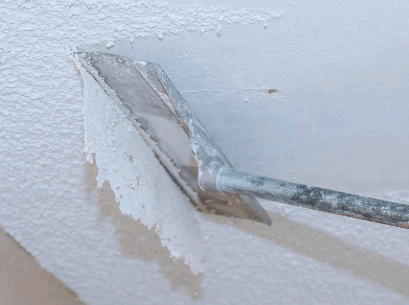
What Is Asbestos Popcorn Ceiling?
Asbestos popcorn ceiling, often referred to as textured ceilings, became popular in the United States from the 1950s to the 1980s, primarily for its aesthetic appeal and ability to hide imperfections in the drywall underneath, making it a common feature in many homes. This type of ceiling finish is characterized by its bumpy, popcorn-like texture, which often contained asbestos fibers—a known health risk when disturbed during renovation projects or ceiling removal processes.
Learn about: How To Clean Asbestos Roof
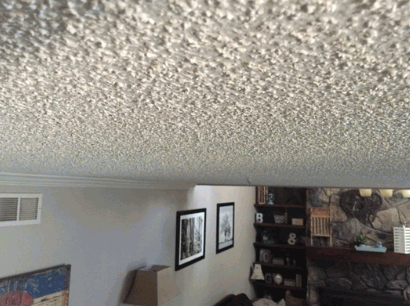
What Are The Risks Of Asbestos Popcorn Ceiling?
The risks associated with asbestos popcorn ceilings are significant, as exposure to asbestos fibers can lead to serious health issues including lung disease and cancer, highlighting the importance of proper safety equipment during ceiling removal. Homeowners need to be aware of the potential for ceiling damage during renovation projects, as disturbing these textured ceilings can release hazardous fibers into the air, compromising home safety and environmental quality, thus requiring strict adherence to safety recommendations.
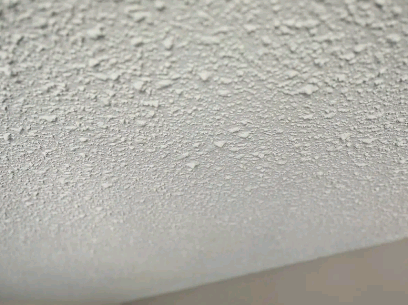
What Are The Health Risks Of Asbestos Exposure?
Exposure to asbestos has been directly linked to severe health risks, including lung disease and various forms of cancer, such as mesothelioma, necessitating regular asbestos testing for at-risk individuals. According to the Centers for Disease Control and Prevention (CDC), individuals who inhale asbestos fibers are at a heightened risk, especially if they have prolonged exposure during activities such as ceiling removal or renovation projects involving old textured products.
Asbestos-related health issues primarily include asbestosis, lung cancer, and mesothelioma, each characterized by different symptoms and timelines. It is essential to note that the onset of symptoms from these diseases can often take decades, typically ranging from 20 to 50 years after initial exposure.
Statistics indicate that those who have occupational exposure are significantly more at risk, with a reported increase in lung cancer rates among workers in industries such as construction and shipbuilding, reinforcing the need for personal protective equipment.
Organizations like the CDC and the American Cancer Society recommend regular health screenings for individuals with a history of asbestos exposure. Awareness plays a critical role, as early detection can dramatically improve treatment outcomes.
- Monitor any respiratory changes over time.
- Seek professional advice if past exposure is known.
- Participate in medical evaluations recommended by healthcare providers.
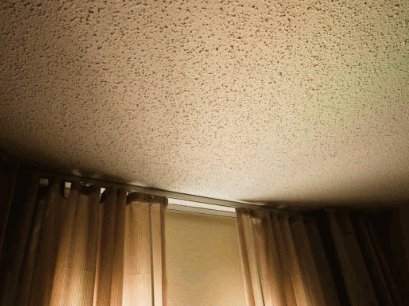
What Are The Risks Of Disturbing Asbestos Popcorn Ceiling?
Disturbing asbestos popcorn ceilings poses serious risks, particularly during the DIY removal process, as it can release hazardous asbestos fibers into the air, significantly increasing health risks for anyone in the vicinity. The improper handling of the removal process can lead to unsafe living conditions, requiring urgent attention to safety equipment and proper disposal methods.
To understand the gravity of these dangers, one must consider the long-term health effects associated with exposure to asbestos, which include severe respiratory conditions and even cancer. This makes it imperative to highlight the significance of using adequate safety gear during any potential DIY removal efforts, to prevent contamination.
- Respirators are crucial to prevent inhalation of toxic fibers.
- Protective clothing and gloves can help limit skin contact.
Even with proper safety equipment, the risks remain high; professionals trained in safely handling these materials possess the necessary expertise to manage the removal process effectively. Therefore, it’s essential to weigh the potential consequences carefully and consult experts when the situation demands.
Ensuring the safety of your living space should always be a priority above all else.
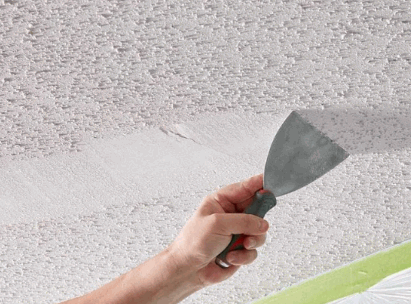
How To Determine If Your Ceiling Contains Asbestos?
Determining whether your ceiling contains asbestos is crucial for ensuring home safety, and can be accomplished through a combination of home inspection and the use of specialized asbestos testing kits. Homeowners should be particularly vigilant with ceilings that have the characteristic popcorn texture, as these may have been installed during periods when asbestos was commonly used in construction materials.
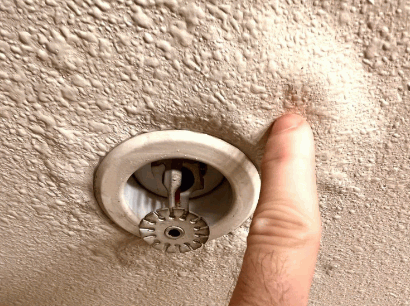
What Does Asbestos Popcorn Ceiling Look Like?
Asbestos popcorn ceilings typically exhibit a bumpy, irregular texture that resembles popcorn, hence the name. These textured ceilings are often white or off-white in color and can vary in thickness, making them a distinctive feature that was popular in mid-20th century homes.
The unique appearance of these ceilings can be attributed to the way the material was applied, leading to diverse patterns that create a somewhat chaotic visual appeal. Often, one might notice slight discoloration over time, ranging from yellowing due to age or exposure to moisture.
- Due to their cast-like finish, these ceilings can trap dust and cobwebs more easily than smoother surfaces.
- Another defining characteristic is their uneven surface, which differentiates them from knockdown or slap brush textures that have a more uniform feel.
If you’re unsure, gently touching the surface can provide clues; asbestos popcorn ceilings feel rough and uneven, unlike the more subtle textures found in modern ceiling finishes, and may indicate potential moisture introduction.
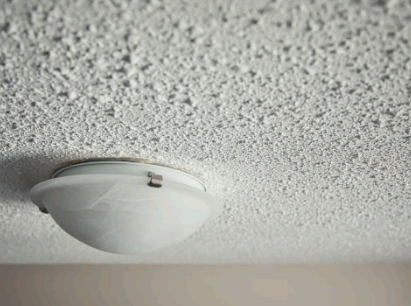
How To Test For Asbestos Popcorn Ceiling?
Testing for asbestos in popcorn ceilings can be performed using home testing kits, which allow homeowners to collect samples and send them to certified laboratories for analysis, ensuring compliance with local regulations. Alternatively, for more reliable results and safety, hiring an asbestos remediation professional is recommended, particularly for large-scale renovations.
When collecting samples, it is crucial to follow specific safety precautions to minimize the risk of exposure. Start by wearing personal protective equipment such as gloves, a mask, and goggles.
Use a damp cloth to prevent the release of fibers during collection, and make sure to seal the sample in a labeled plastic bag. Ensure that the area is well-ventilated and keep children and pets away while performing the test.
Following local regulations regarding asbestos testing is essential. Various states and municipalities have specific guidelines on handling and disposing of materials containing asbestos. Always check local health department websites or contact them directly for detailed information.
For assistance, homeowners can refer to regulatory agencies or websites such as the Environmental Protection Agency (EPA) to find certified professionals specializing in asbestos testing and removal in their area.
These resources can help ensure proper procedures regarding asbestos testing and removal are followed, protecting both health and compliance with local regulations.
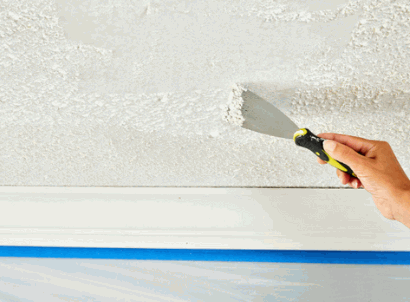
How To Safely Remove Asbestos Popcorn Ceiling?
Safely removing asbestos popcorn ceiling is a complex and risky process that requires proper planning, safety precautions, and personal protective equipment. To ensure homeowner safety and minimize health risks, it is essential to follow a structured removal process, which can often require professional assistance due to the dangers associated with disturbing asbestos materials.
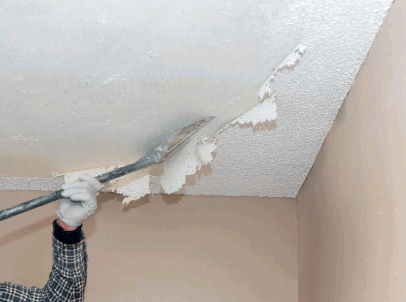
What Safety Precautions Should You Take Before Removing Asbestos Popcorn Ceiling?
Before initiating the removal of asbestos popcorn ceiling, it is vital to implement safety precautions to protect yourself and others in the home, including the use of a respirator filter and other personal protective equipment. This includes using appropriate personal protective equipment (PPE) such as a respirator filter, safety goggles, and protective clothing, as well as sealing off the work area with plastic sheeting to prevent contamination.
Adhering to safety measures is not just a suggestion; it is essential for ensuring a safe working environment. To further enhance safety during the removal process, consider implementing the following precautions:
- Ventilation: Ensure the area is well-ventilated by using exhaust fans to reduce airborne toxins.
- Disposal: Have designated disposal containers for collected materials, complying with local hazardous waste regulations.
- Training: Ensure that all individuals involved are trained and aware of the risks associated with asbestos exposure.
Creating a controlled environment where no unauthorized individuals can enter is crucial for maintaining safety and minimizing exposure to hazardous materials during the removal process, especially during scraping texture.
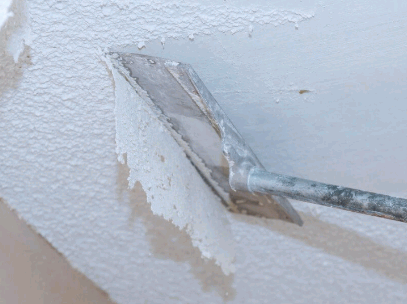
What Tools And Materials Do You Need For Removing Asbestos Popcorn Ceiling?
To effectively remove asbestos popcorn ceiling, you will require specific tools and materials, including a drywall knife and a texture scraper, to ensure the safe and efficient completion of the project. Essential tools include a drywall knife and texture scraper, alongside safety materials such as plastic sheeting for contamination prevention, disposal bags for hazardous waste, and personal protective equipment.
Along with these foundational items, it is crucial to gather other materials that will facilitate a thorough cleanup process and minimize exposure risks, such as a garden sprayer to dampen surfaces during scraping. Prepare a set of:
- respirators with HEPA filters
- protective clothing, including gloves and goggles
- wetting agent to dampen the ceiling
- disposable cloths for additional cleanup
- a vacuum equipped with a HEPA filter for dust collection
Utilizing the right tools not only aids in a smooth operation but also significantly reduces the possibility of harmful fibers being released into the air. Ensuring that all safety protocols are followed during the removal and disposal of asbestos-laden materials is vital for protecting both yourself and the environment.
What Steps Should You Follow To Remove Asbestos Popcorn Ceiling?
The removal process for asbestos popcorn ceiling involves several critical steps to ensure safety and compliance with local regulations. Starting with a thorough inspection and preparation of the workspace, followed by the careful scraping of the textured ceiling, and concluding with proper disposal of hazardous waste is essential.
It is important that individuals conducting this task utilize protective gear, including masks and gloves, to shield themselves from any airborne particles.
- Before beginning the actual removal, the area must be sealed off to prevent any potential contamination from spreading to other parts of the home.
- After the ceiling is scraped away, all materials should be placed in designated, clearly labeled containers to ensure proper identification and handling.
- Engaging a certified disposal service to manage asbestos waste is crucial for environmental safety and compliance with legal obligations.
Following these detailed steps not only protects those involved in the removal process but also contributes to broader community health and safety.
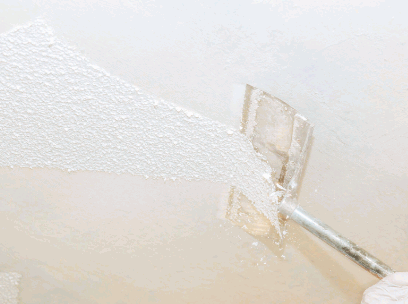
How To Dispose Of Asbestos Popcorn Ceiling Safely?
Disposing of asbestos popcorn ceiling safely is a crucial step that requires adherence to local regulations and environmental guidelines. It is essential to place the removed materials in proper disposal bags labeled as hazardous waste to minimize health risks and ensure the safety of waste disposal processes.
What Are The Proper Disposal Methods For Asbestos Popcorn Ceiling?
The proper disposal methods for asbestos popcorn ceiling involve following local regulations that dictate how hazardous waste should be handled and disposed of. Homeowners must ensure that all asbestos materials are securely contained in disposal bags and transported to certified hazardous waste facilities.
To initiate the disposal process, it is crucial to first label all materials clearly, indicating their hazardous nature. This acts as a warning to anyone who may come into contact with them. Once labeled, these materials should be sealed tightly within specialized bags, ensuring no fibers can escape during transportation.
It’s essential that homeowners or contractors choose certified disposal sites, as these facilities follow strict guidelines to manage hazardous waste safely. Failing to adhere to proper procedures can result in serious environmental contamination and legal repercussions.
- Improper disposal can lead to health risks for both humans and wildlife.
- Asbestos fibers can linger in the air and soil, posing long-term dangers.
- Choosing certified sites ensures compliance with local laws and protects the community.
Ensuring environmental quality is not just a regulatory requirement; it is a social responsibility to safeguard future generations.
What Should You Do If You Accidentally Disturb Asbestos Popcorn Ceiling?
If you accidentally disturb asbestos popcorn ceiling, it is critical to act quickly to minimize health risks and prevent contamination. Immediately cease all work in the area, seal off the space using plastic sheeting, and utilize safety equipment to avoid inhalation of any released asbestos fibers.
Once the area is secured, it’s vital to contact professionals who specialize in hazardous material removal. These experts are equipped to handle asbestos safely and can provide guidance tailored to your situation. Ensure to:
- Identify any potential sources of contamination that may require more intensive cleanup.
- Test air quality to monitor for any lingering asbestos fibers.
- Inform individuals in the vicinity about the disturbance to ensure their safety.
Remember, thorough cleanup and testing are essential to safeguard your health and prevent future risks.
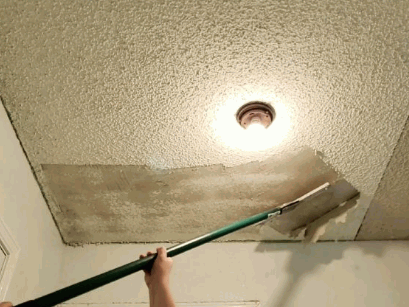

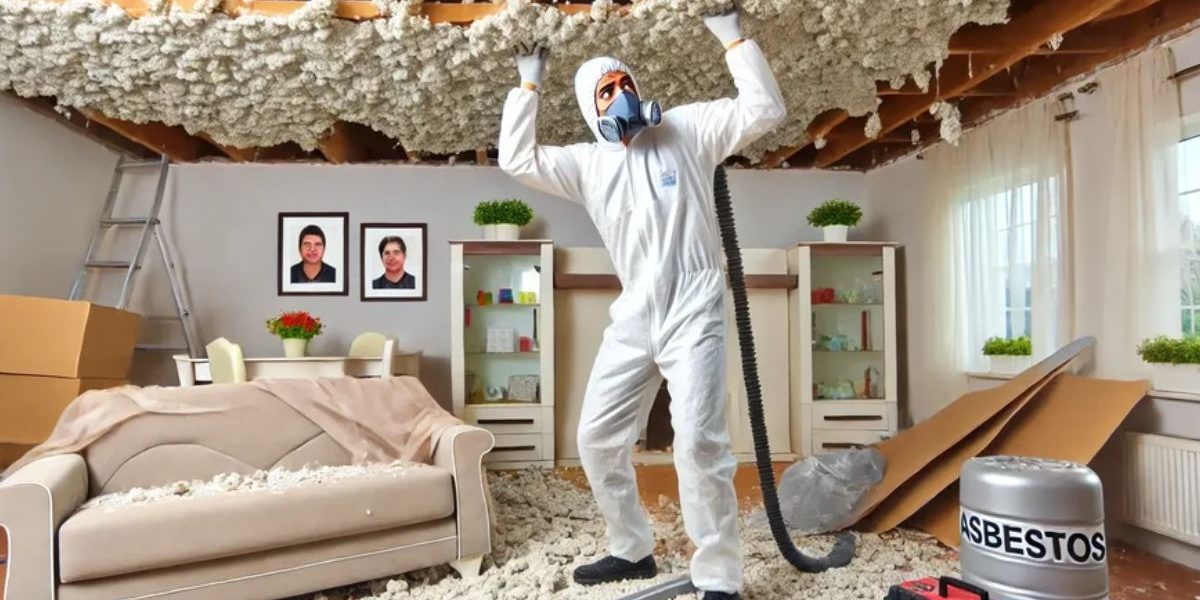
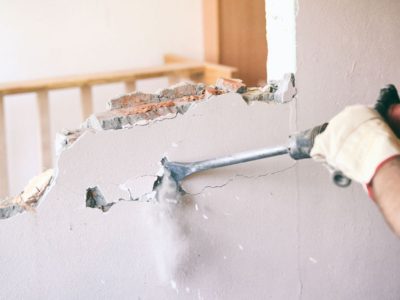
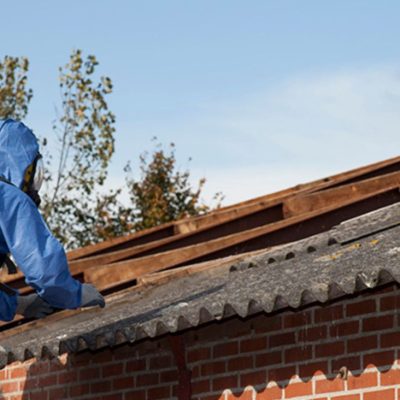
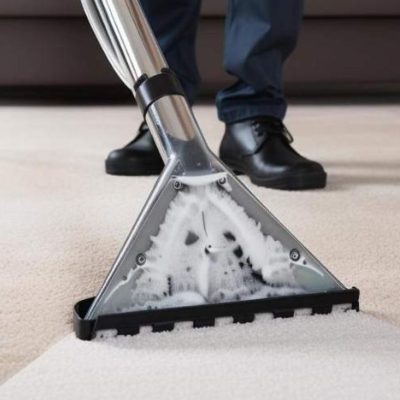
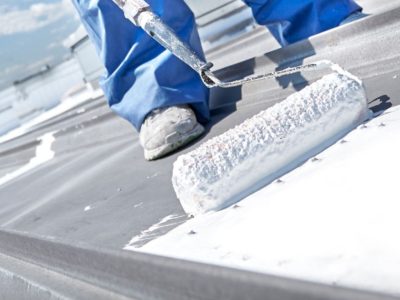
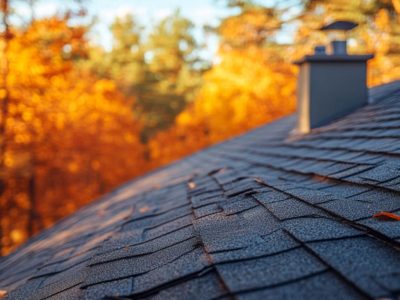
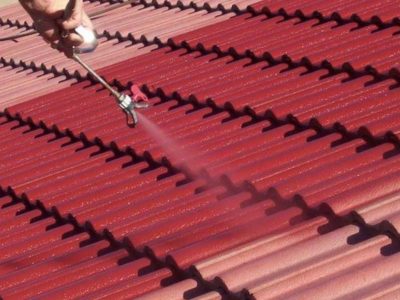

Comments